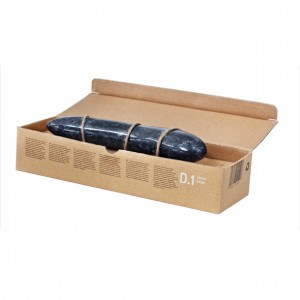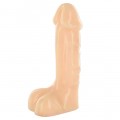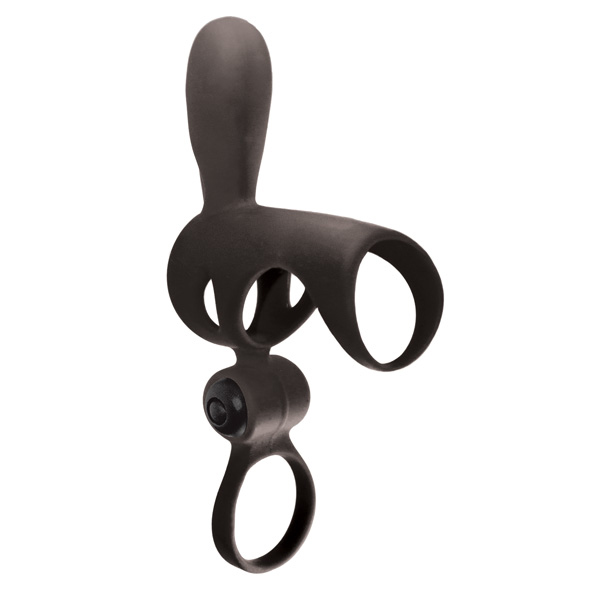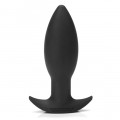 The etymology of the word dildo is unclear. The Oxford English Dictionary (OED) describes the word as being of “origin unknown”. One theory is that it originally referred to the phallus-shaped peg used to lock an oar in position on a dory (small boat). It would be inserted into a hole on the side of the boat, and is very similar in shape to the modern toy. It is possible that the sex toy takes its name from this sailing tool, which also lends its name to the town of Dildo and the nearby Dildo Island in Newfoundland, Canada. Others suggest the word is a corruption of Italian diletto “delight”. It has also been noted that the word dildo has similarity to “dill”, a pickled cucumber, which is a vegetable that has been used as a natural dildo.
The etymology of the word dildo is unclear. The Oxford English Dictionary (OED) describes the word as being of “origin unknown”. One theory is that it originally referred to the phallus-shaped peg used to lock an oar in position on a dory (small boat). It would be inserted into a hole on the side of the boat, and is very similar in shape to the modern toy. It is possible that the sex toy takes its name from this sailing tool, which also lends its name to the town of Dildo and the nearby Dildo Island in Newfoundland, Canada. Others suggest the word is a corruption of Italian diletto “delight”. It has also been noted that the word dildo has similarity to “dill”, a pickled cucumber, which is a vegetable that has been used as a natural dildo.
According to the OED, the word’s first appearance in English was in Thomas Nashe’s The Choice of Valentines or the Merie Ballad of Nash his Dildo (c. 1593). The word also appears in Ben Jonson’s 1610 play, The Alchemist. William Shakespeare used the term once in The Winter’s Tale, believed to be from 1610 or 1611, but not printed until the First Folio of 1623.
The phrase “Dil Doul”, referring to a man’s penis, appears in the 17th century folk ballad “The Maids Complaint for want of a Dil Doul”. The song was among the many in the library of Samuel Pepys.
An olisbos (pl. olisboi) is a classical term for a dildo, from Greek ὄλισβος. i.e. a dildo that was usually made of leather. A godemiché is a dildo in the shape of a penis with scrotum.
In some modern languages, the names for dildo can be more descriptive, creative or subtle—note, for instance, the Russian фаллоимитатор (literally “phallic imitator”), Hindi दर्शिल्दो darśildō, Spanish consolador “consoler” and Welsh cala goeg “fake penis”.
Dildos in one form or another have been present in society throughout history. Artifacts from the Upper Paleolithic which have previously been described as batons were most likely used for sexual purposes. There appears to have been hesitation on the part of archaeologists to label these items as sex toys: as archaeologist Timothy Taylor put it, “Looking at the size, shape, and—some cases—explicit symbolism of the ice age batons, it seems disingenuous to avoid the most obvious and straightforward interpretation. But it has been avoided.”
The world’s oldest known dildo is a siltstone 20-centimeter phallus from the Upper Palaeolithic period 30,000 years ago that was found in Hohle Fels Cave near Ulm, Germany.
The first dildos were made of stone, tar, wood and other materials that could be shaped as penises and that were firm enough to be used as penetrative sex toys. Dildo-like breadsticks, known as olisbokollikes (sing. olisbokollix), were known in Ancient Greece prior to the 5th century BC. Chinese women in the 15th century used dildos made of lacquered wood with textured surfaces. Nashe’s early-1590’s work The Choice of Valentines mentions a dildo made from glass.
There have been many references to dildos in the historical and ethnographic literature. Haberlandt, for example, illustrates single and double-ended wooden dildos from late 19th century Zanzibar. With the invention of modern materials, there appeared the possibility of making dildos of different shapes, sizes, colors and textures.




Speak Your Mind